Gut microbiome alterations in patients with stage 4 hepatitis C
- PMID: 27625705
- PMCID: PMC5020480
- DOI: 10.1186/s13099-016-0124-2
Gut microbiome alterations in patients with stage 4 hepatitis C
Abstract
Background: Hepatitis C virus (HCV) causes debilitating liver diseases, which may progress to cirrhosis and cancer, and claims 500,000 annual lives worldwide. While HCV epidemiology, pathophysiology, and therapy are being deeply studied, rare attention is given to reciprocal interactions between HCV infection , HCV-induced chronic liver diseases, and the human gut microbiome. As Egypt has the world's highest prevalence of HCV infections, we launched this study to monitor differences in the gut microbial community composition of Egyptian HCV patients that may affect, or result from, the patients' liver state.
Results: To this end, we analyzed stool samples from six stage 4-HCV patients and eight healthy individuals by high-throughput 16S rRNA gene sequencing using Illumina MiSeq. Overall, the alpha-diversity of the healthy persons' gut microbiomes was higher than those of the HCV patients. Whereas members of phylum Bacteroidetes were more abundant in HCV patients, healthy individuals had higher abundance of Firmicutes, Proteobacteria, and Actinobacteria. Genus-level analysis showed differential abundance of Prevotella and Faecalibacterium (higher in HCV patients) vs. Ruminococcus and Clostridium (healthy group), indicating that the higher abundance of Bacteroidetes in HCV patients is most likely due to Prevotella overabundance. The probiotic genus, Bifidobacterium, was only observed in the microbiotas of healthy individuals.
Conclusions: To the best of our knowledge, this study provides a first overview of major phyla and genera differentiating stage 4-HCV patients from healthy individuals and suggests possible microbiome remodeling in chronic hepatitis C, possibly shaped by bacterial translocation as well as the liver's impaired role in digestion and protein synthesis. Future studies will investigate the microbiome composition and functional capabilities in more patients while tracing some potential biomarker taxa (e.g., Prevotella, Faecalibacterium vs. Bifidobacterium).
Keywords: Gastro-intestinal tract; High-throughput sequencing; Infectious diseases; Liver disease; Microbiome; Next-generation sequencing; Virology.
Figures
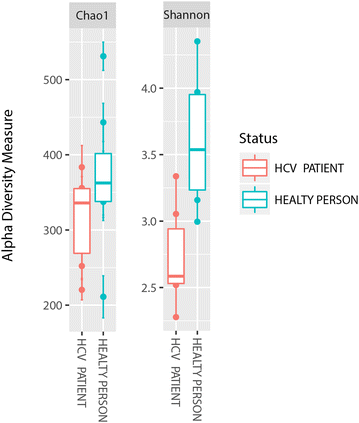
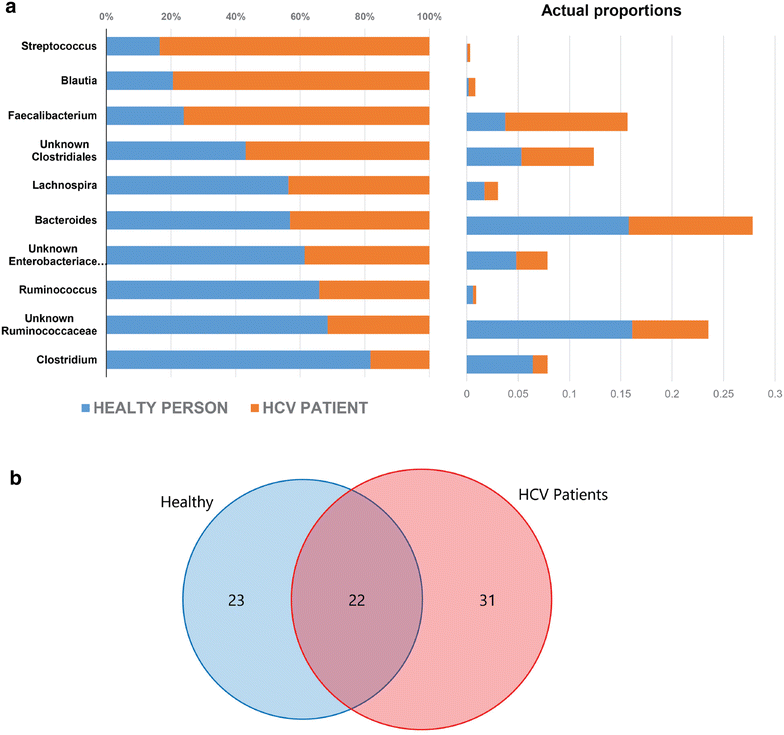
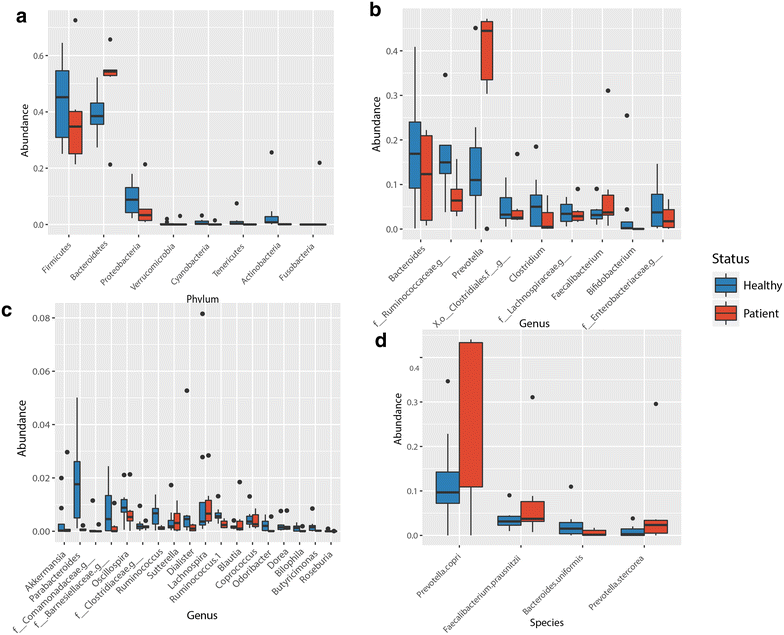

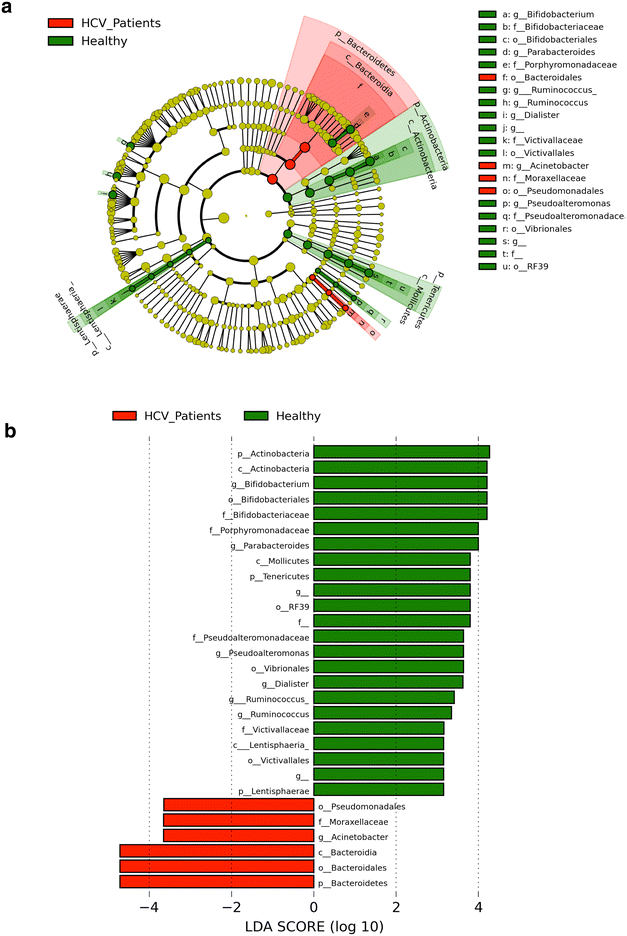
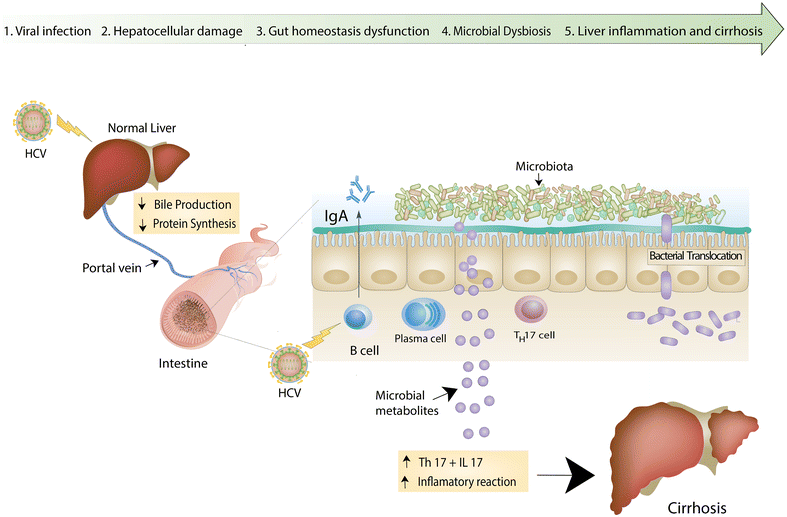
References
LinkOut - more resources
Full Text Sources
Other Literature Sources
Research Materials

